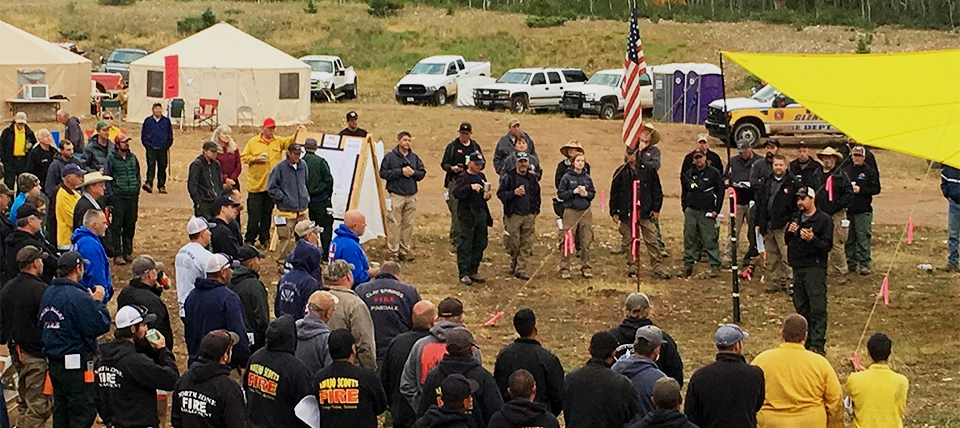
NPS Photo
Wildfires and other incidents are categorized by complexity from Type 1-5 with Type 1 being the most complex and require a highly complex response with many resources. Type 5 is the lowest complexity which may be as small as a single tree struck by lightning and can be handled by the local unit. Over time, incidents can become more complex and less complex. The response level is built to fit the needs of the incident. Incident Management Teams (IMT) that respond to incidents are also able to expand and contract in all functional areas as necessary to meet the needs of the incident.
Firefighters and people with a fire background are not the only people qualified to work on an IMT. A wide variety of skillsets and positions are needed to fill the capacity of IMTs. Without pertinent positions, the IMT cannot fill the needed roster to respond to an incident.
To respond to the most complex incidents, Complex Incident Management Teams are configured to respond to large, high complexity incidents. CIMTs are managed on a rotational basis through ten geographical areas. Some areas have Type 3 IMTs to manage smaller incidents that extend for multiple operational periods. The teams may consist of members from federal, state, county, and local agencies. Many teams have trainee positions for persons who have not yet met all the training requirements for their position.
Staff of the geographic areas (GA) advertise vacancies on teams within their area and select new team members from the nominations received. Vacancies are generally announced through the agencies within the GA. Some Geographic Area Coordination Centers (GACCs) have placed recruitment information on their websites. In addition to the IMTs, many subordinate positions are required to manage an incident. Dispatch centers will search the Interagency Resource Ordering Capability (IROC) for available individuals to fill orders placed by the incident management team. These may be incident command system positions identified in the NIMS Wildland Fire Qualification System Guide (310-1) or technical specialists.
Last updated: July 19, 2023
